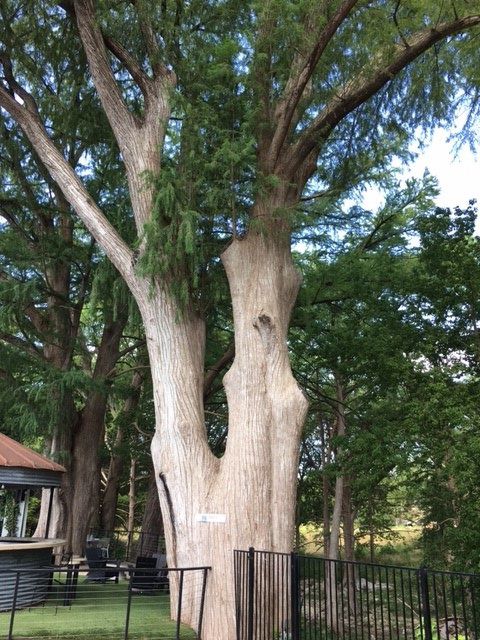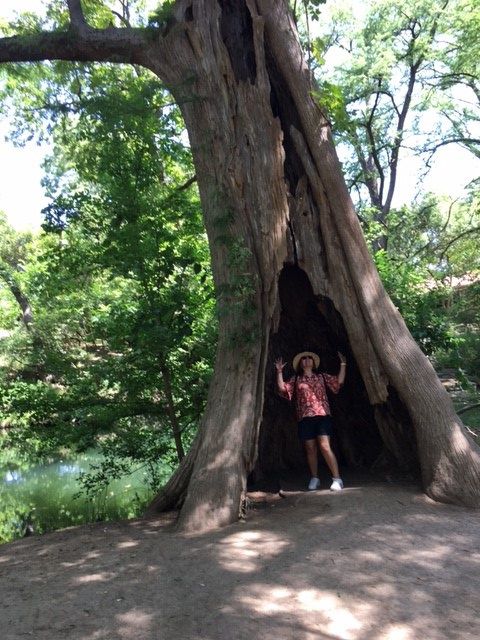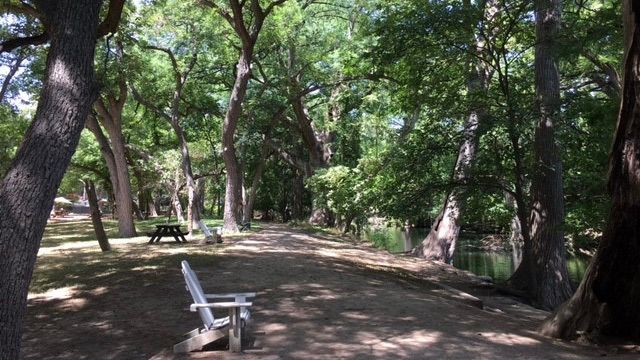When you drive out Ranch Road 12, deep into Hays County in the central Texas Hill Country, you’ll come to the bustling little town of Wimberley.
It’s an artist colony with shops, bakeries and restaurants clustered in the center of town. Nestled along the Blanco river among giant trees, Wimberley is a favorite Texas destination.
Most go to Blue Hole Park or Jacob’s Well — popular spring-fed swimming areas, when the springs are running.
But what makes the town truly special is the Cypress Creek Nature Preserve, filled with towering trees that line the river in the middle of the village.
The tallest of them is Bald Cypress, which forms a shady cathedral along the banks.
Not only are they majestic, the Bald Cypress there are very, very old -- among the oldest living things in Texas. One giant, known as Big Daddy, is estimated to be nearly 600 years old.

Within these living titans is a climate record; a history of the local climate that dates to the time of Colombus. By examining tree rings, extracted by finger-sized cores into the center of the trees, scientists have reconstructed Texas drought history as recorded by the things that lived through it.
Their story reveals a region plagued by long, persistent droughts called “megadroughts” that lasted two decades or longer.
Most water experts in Texas currently use the drought of 1950–1956 as a worst-case scenario, but tree-ring reconstructions show several extended droughts of the past were longer and/or more intense than the 1950s drought.
The tree ring record shows that droughts have occurred in the 1500s, the early 1700s and the early 1900s. Terrible droughts recur time after time.

The evidence shows that extended droughts have been a consistent feature of the southwestern climate since the 800s, including at least four megadroughts between 15 to 30 years long, centered in central or northern Mexico.
According to the Texas Water Journal, severe decadal-scale droughts have occurred in Texas at least once a century since the 1500s.
The authors of that study say, “The recurrence of severe prolonged drought in South Central Texas appears to be the norm, not the exception. It would be a questionable strategy for civil authorities to assume that the 1950s drought represents the worst-case scenario to be used for planning purposes in water resources management.”
Our team of meteorologists dives deep into the science of weather and breaks down timely weather data and information. To view more weather and climate stories, check out our weather blogs section.










